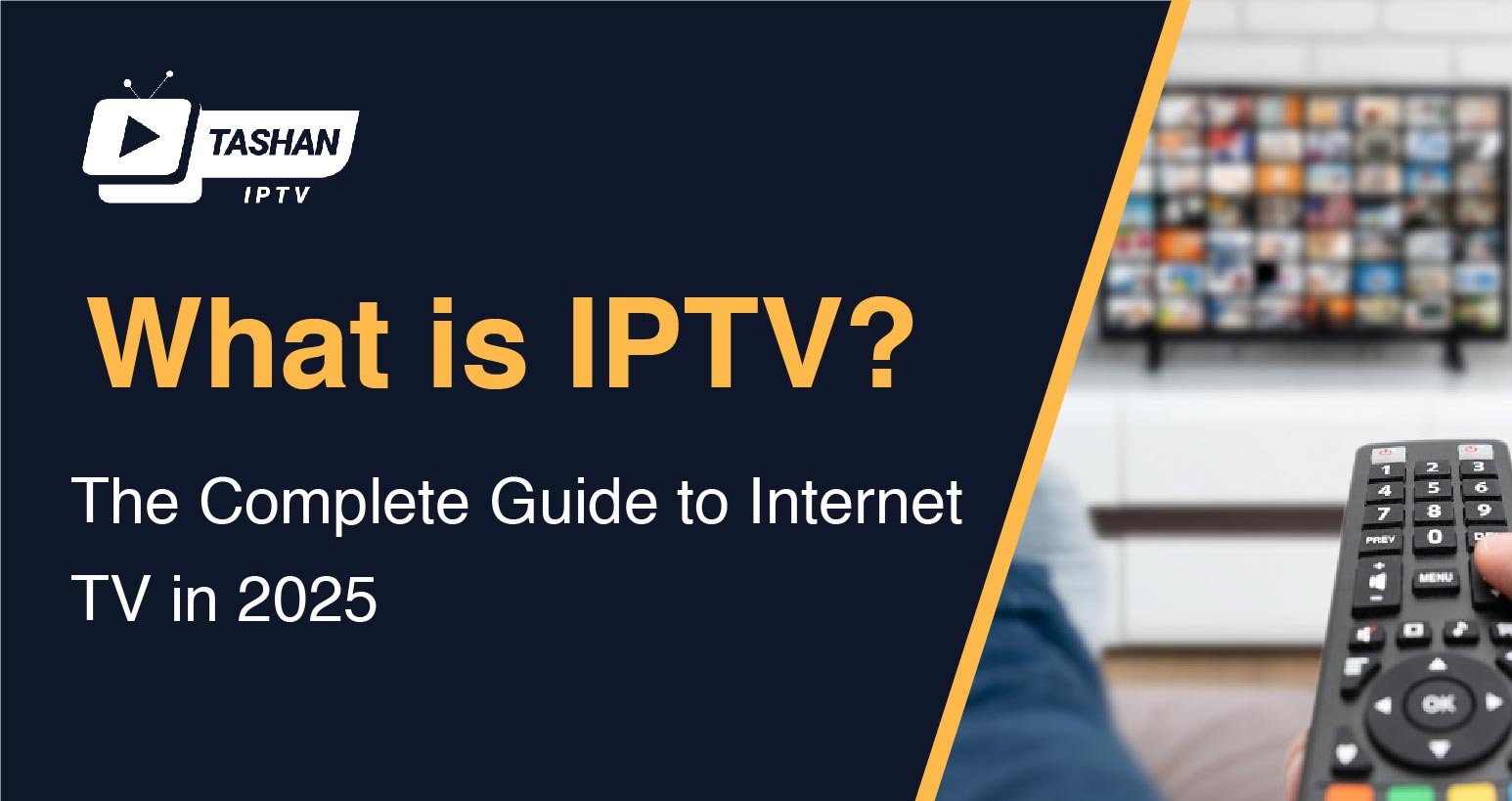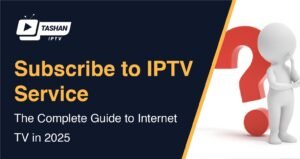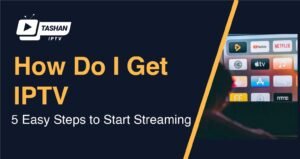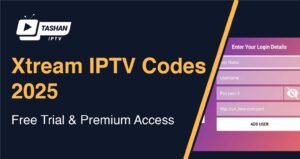Introduction
Cord-cutting isn’t a trend anymore—it’s the new normal. But if you’re still asking “ What is IPTV ?”, you’re in the right place. IPTV (Internet Protocol Television) delivers live channels, movies, series, and catch-up TV over the internet instead of satellite or cable. In 2025, IPTV has matured into a flexible, affordable alternative with better content discovery, multi-device access, and 4K streaming—provided you choose a reliable provider and set it up correctly.
This guide breaks down how IPTV works, its pros and cons, the devices you can use, and how to pick the right provider for your needs.
“According to Wikipedia’s IPTV page, Internet Protocol Television delivers TV content via the internet instead of traditional methods.”
Key Takeaways
IPTV = TV over the internet. It streams live channels and VOD via IP networks instead of satellite/cable.
Three main types: Live TV, VOD (Video on Demand), and Catch-up/Time-shift.
Setup is simple: You just need a stable connection, a compatible app (player), and valid M3U or Xtream Codes.
Benefits: Lower cost, more channels/VOD, works on many devices, often supports 4K and EPG.
Watchouts: Quality depends on your internet and the provider’s server stability; legality varies by source—choose reputable providers.
Best for: Viewers who want premium channels and on-demand content with flexible monthly or yearly plans across multiple devices.
What Is IPTV ?
IPTV (Internet Protocol Television) is a way to deliver television content using the same technology that powers the web: IP networks. Instead of broadcasting a fixed schedule through satellite or cable infrastructure, IPTV streams content on demand to your app or device. That means you can start/stop, catch up on missed programs, and browse a large VOD library—all from one interface.
How Does IPTV Work?
Content ingestion: The provider aggregates live channels and VOD libraries.
Encoding & transcoding: Streams are converted into internet-friendly formats (e.g., HLS) and prepared in multiple resolutions (SD/HD/4K).
Middleware & EPG: A control panel manages users, playlists, and EPG (program guide).
- Delivery: You log in via M3U URL or Xtream Codes (URL/Username/Password) in your player app, and streams are served through the provider’s CDN/servers.
IPTV vs Traditional TV (and OTT)
Traditional TV (Cable/Satellite): Fixed channel lineup, proprietary set-top box, limited flexibility.
OTT (e.g., Netflix, Prime Video): On-demand apps over the internet, usually no live channels.
IPTV: Combines both worlds—live TV + VOD + catch-up in one place, on almost any device.
Types of IPTV Services
Live TV: Real-time streaming of channels (sports, news, movies).
VOD (Video on Demand): A large library of movies/series you can play anytime.
Catch-up/Time-Shift: Access programs you missed within a specific window (e.g., last 24–72 hours).
EPG (Electronic Program Guide): TV guide that helps you navigate schedules.
Pros and Cons of IPTV
Pros
Cost-effective: Often cheaper than cable/satellite with bigger channel/VOD lineups.
Device freedom: Works on Smart TV, Android TV/Box, Fire TV, iOS, Windows, macOS.
4K/HD options: Higher resolutions when bandwidth allows.
Flexible subscriptions: Monthly/quarterly/annual plans; easy to upgrade or cancel.
Features you’ll actually use: EPG, search, favorites, parental control, multi-screen (on some players).
Cons
Internet-dependent: Needs stable, consistent bandwidth (we recommend 25 Mbps+ for 4K).
Provider quality varies: Poor servers mean buffering, channel downtime, or EPG issues.
Legal considerations: Only use legitimate, properly licensed content sources in your region.
Devices & Apps That Support IPTV
You can watch IPTV on almost anything with a solid connection:
Smart TV (Samsung/LG): Apps like Smart IPTV (SIPTV), Set IPTV, Net IPTV.
Android TV / TV Boxes: TiviMate, IPTV Smarters Pro, OTT Navigator, XCIPTV.
Amazon Fire TV/Stick: IPTV Smarters Pro, TiviMate (via Downloader).
Mobile (Android/iOS): IPTV Smarters Pro, GSE Smart IPTV.
PC/Mac: VLC, Kodi, PotPlayer.
Tip: If you can choose, Xtream Codes logins are often more stable and easier than copying a long M3U URL.
What You Need to Get Started
Stable internet: Minimum 10–15 Mbps for HD, 25 Mbps+ recommended for 4K and multi-device homes.
Player app: Install a compatible IPTV player for your device.
Playlist or login: Use either an M3U link (playlist) or Xtream Codes from a reputable provider.
Optional EPG URL: Some players fetch EPG automatically via Xtream; others let you add XMLTV links.
Choosing the Right IPTV Provider in 2025
Not all services are equal. Evaluate providers like a reviewer would:
Uptime & stability: Minimal buffering during peak hours.
Channel lineup & VOD depth: Local + international channels, frequent VOD updates.
4K/HD quality: Consistent bitrates and transcoding profiles.
EPG accuracy: Reliable guide data, catch-up availability.
Trial before you buy: A 24-hour test to verify your device and connection.
Support & transparency: Clear setup instructions, quick WhatsApp/Telegram support, fair refund policy.
Payment options: Secure checkout with clear renewal terms.
On www.tashan-iptv.com, we recommend starting with a 24-hour free trial to validate your device, location, and network before subscribing.
Setup Walkthrough (Example with IPTV Smarters Pro)
Install IPTV Smarters Pro on your device.
Choose “Login with Xtream Codes API.”
Enter Server URL, Username, Password (from your provider).
Save → Let the app fetch channels, VOD, and EPG.
Open Live TV or Movies and start watching.
If you experience buffering, switch your connection (5 GHz Wi-Fi or Ethernet), close background apps, or change the stream source if the app allows.
Frequently Asked Questions (FAQ)
1) What does IPTV stand for?
IPTV stands for Internet Protocol Television—TV delivered via IP networks instead of broadcast or cable.
2) What is IPTV and how does it work?
A provider encodes live channels/VOD, hosts them on servers/CDNs, and you access them through a player using an M3U playlist or Xtream Codes login over the internet.
3) What is IPTV buffering and how can I reduce it?
People search what is IPTV buffering issues — buffering is caused by weak Wi-Fi, ISP throttling, or overloaded provider servers. Fixes: use Ethernet or 5GHz Wi-Fi, close background apps, switch stream source or contact provider for a better server.
4) Do I need a special box?
No. Any Smart TV, Android TV/Box, Fire TV, phone, or PC with an IPTV player app works. A dedicated Android TV box or using Ethernet can improve stability.
5) What internet speed do I need?
For smooth HD, aim for 10–15 Mbps per stream; for 4K, 25 Mbps+ is recommended. Latency and Wi-Fi quality also matter—5 GHz Wi-Fi or wired Ethernet is best.
6) What is IPTV M3U vs Xtream Codes — which should I choose?
When comparing what is IPTV access methods: M3U is a single playlist link compatible with many players; Xtream Codes (URL + username + password) tends to be easier, more stable and offers automatic EPG in modern apps.
7) Can I watch IPTV on a Smart TV without a box?
Yes—install a compatible IPTV app from your TV’s app store (e.g., Smart IPTV, Set IPTV), then add your M3U or Xtream details.
8) Why do some streams buffer?
Possible reasons: weak Wi-Fi, ISP congestion, overloaded provider servers, or bad routing. Try Ethernet, 5 GHz Wi-Fi, a different player app, or ask your provider for an alternate stream route.
9) Can I use IPTV on multiple devices?
Depends on your subscription. Some plans allow multi-screen; others restrict to one active stream per account.
10) What happens if a channel is down?
Reputable providers monitor channels and rotate sources. If a channel fails, contact support or check if the app offers alternate sources.
11. What is IPTV setup — can I try before buying?
Many users asking what is IPTV want to test first — reputable providers offer 24-hour or 48-hour free trials (M3U or Xtream Codes) so you can confirm device compatibility and stream quality before purchase.
12) What is IPTV legal status — is it legal to use?
Answer: If you search what is IPTV legality, the short answer: IPTV itself is a delivery technology and legal. The legality depends on the provider and whether the content is properly licensed in your country. Always use reputable, licensed services.
Final Thoughts
IPTV in 2025 is a powerful, flexible way to replace cable without sacrificing live sports, movies, or international channels. The experience you get depends on three things: your internet quality, your player setup, and the provider you choose. Test first, then subscribe with confidence.
Conclusion
Now that you know what IPTV is, how it works, and what to look for in a provider, the next step is simple: test it on your own device. Start with a 24-hour free trial from Tashan-IPTV, verify your channels and VOD, and upgrade to the plan that fits your home.
👉 Ready to get started? Visit www.tashan-iptv.com to request your trial and enjoy premium IPTV the smart way.




